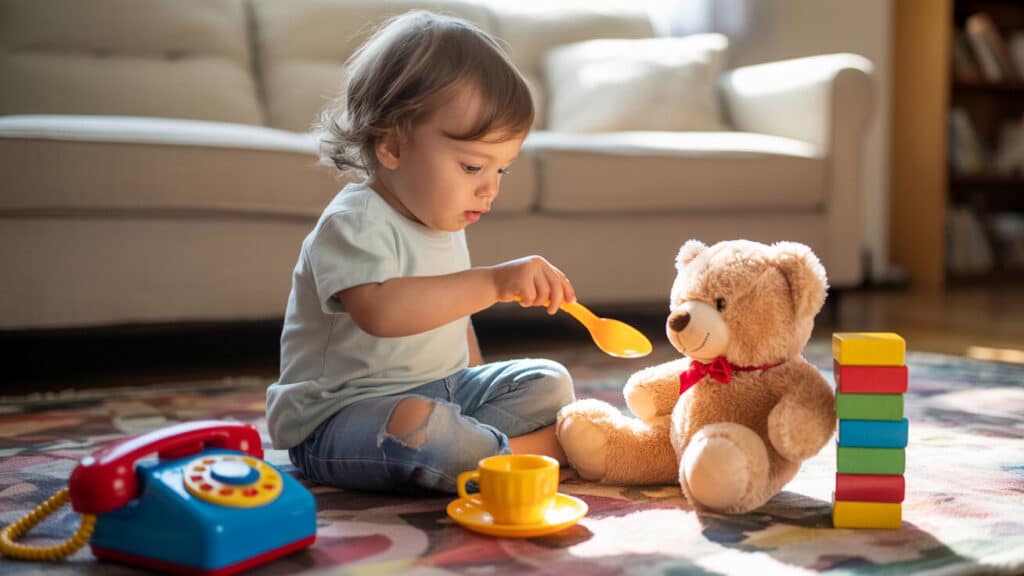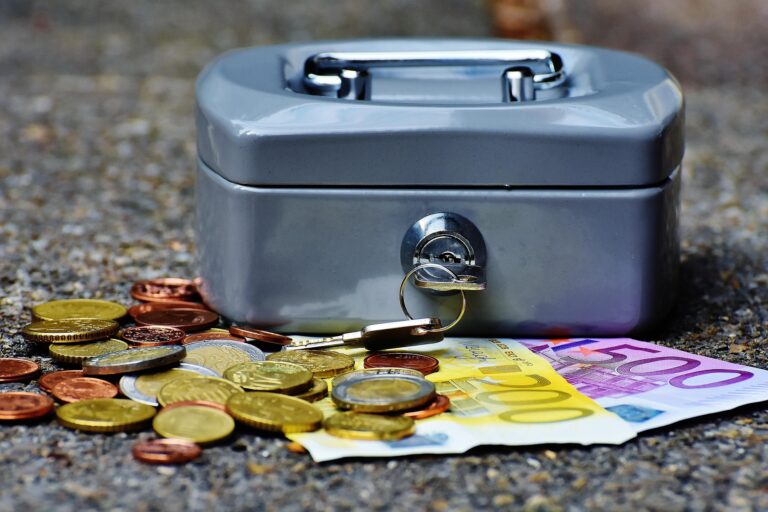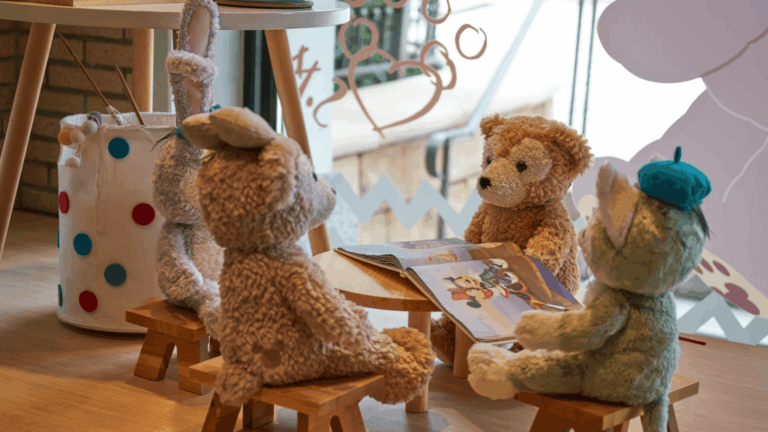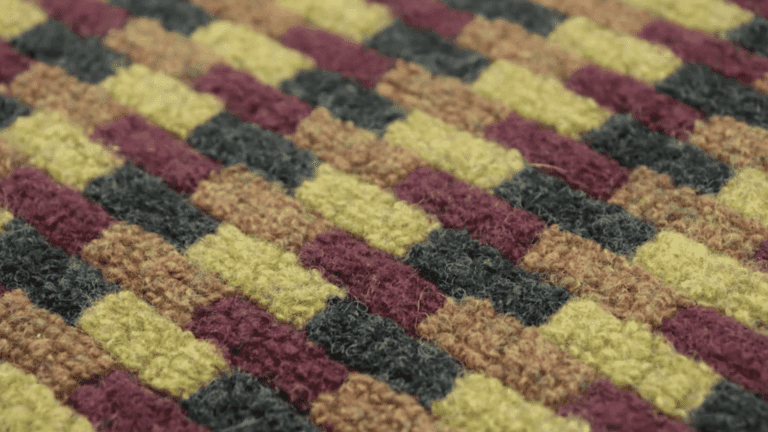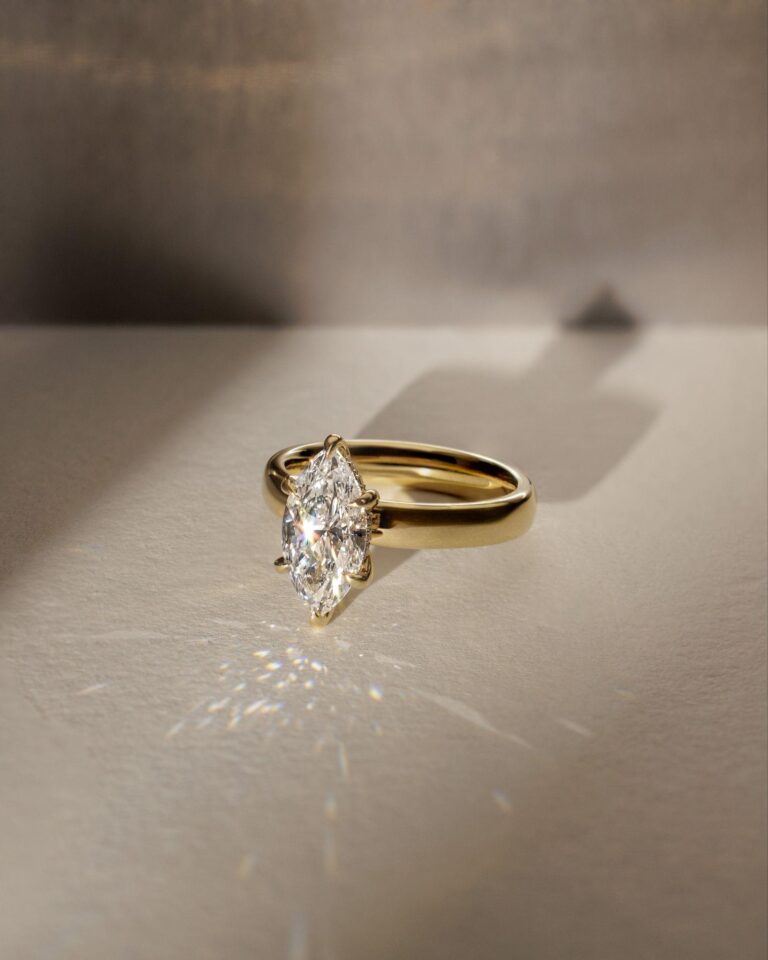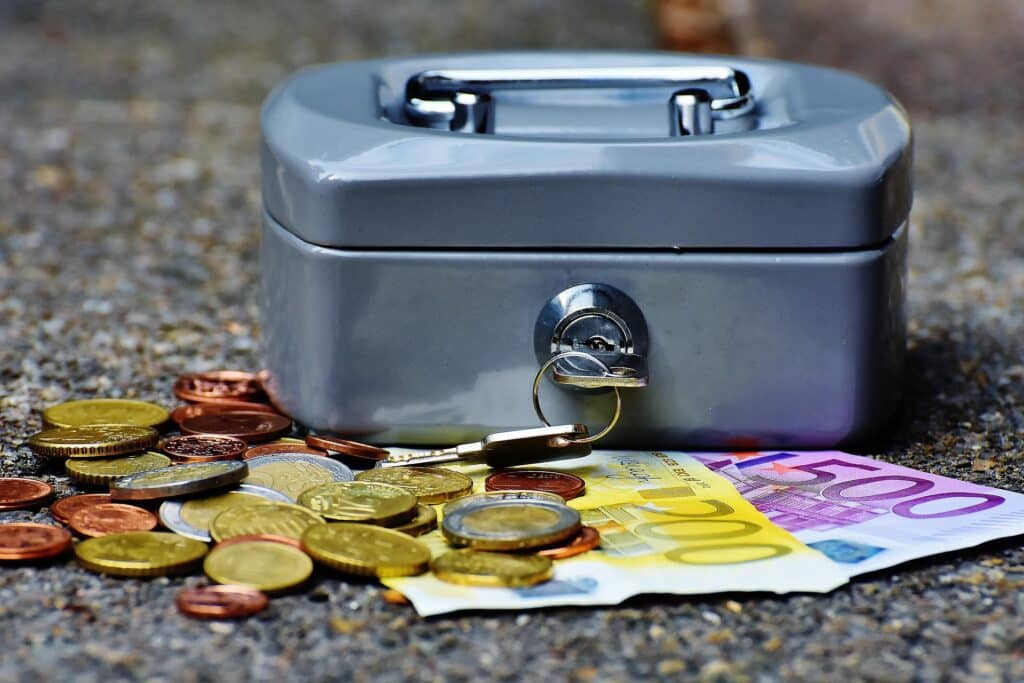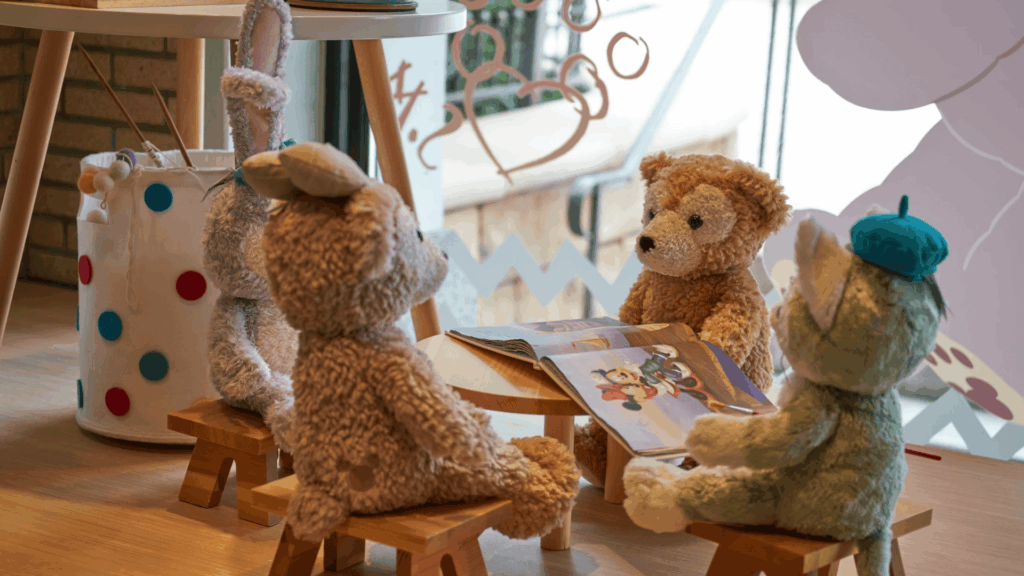Have you ever watched your toddler pretend to feed their stuffed animal and wondered when this magical behavior begins?
Most parents notice their little ones start pretending around 12 to 18 months old. But here’s what many don’t realize – this isn’t just a cute playtime.
Pretend play marks a massive milestone in your child’s brain development. It shows they’re learning to think symbolically, solve problems, and understand the world around them. When you know what to look for, you can support this growth in simple ways.
Let us walk you through the question of exactly when does pretend play start and how you can encourage it at home.
The Beginning of The Magic of Pretend Play
Pretend play doesn’t just appear overnight. It starts small and grows with each child.
Around 12 months, parents might see their baby pick up a toy phone and hold it to their ear. They’re copying what they see adults do. This is the first sign of pretend play.
By 15 to 18 months, things get more interesting. Toddlers might pretend to drink from an empty cup or feed their teddy bear. They’re starting to understand that one thing can represent another.
When a child first stirs an empty pot with a wooden spoon, they look so serious, just like they’ve seen their parents cook dinner. That’s when their imagination is taking off. This early pretend play allows a child’s brain to practice essential skills.
They’re learning to think about things that aren’t there. It’s the foundation for creativity, problem-solving, and understanding others’ feelings. Parents can watch for these small moments.
When Does Pretend Play Start – Stages of Pretend Play
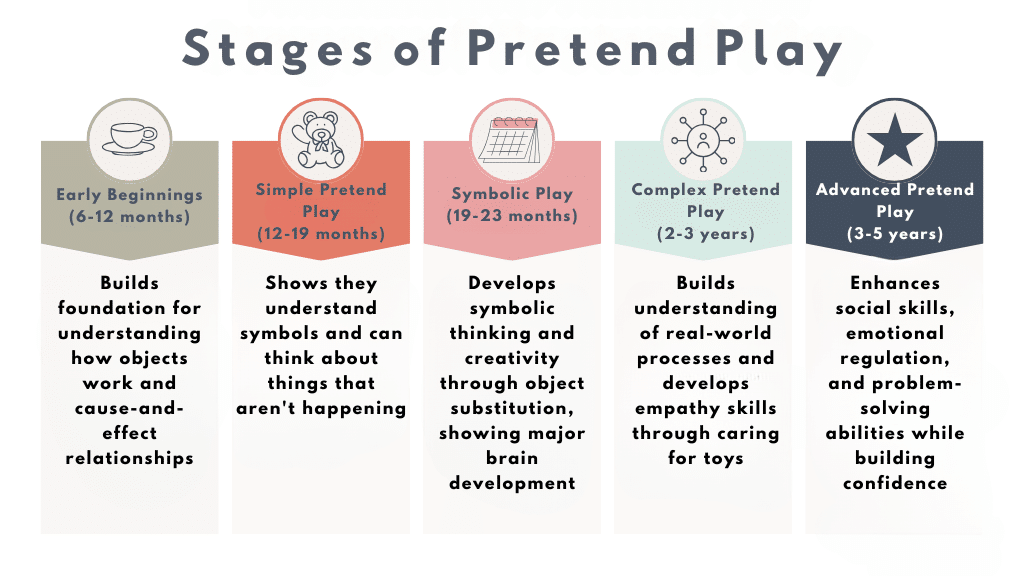
Children go through clear stages as they develop their pretend play skills. Each stage builds upon the last, creating a path toward rich, imaginative play.
1. Early Beginnings (6-12 months)
At this stage, babies engage in pre-pretend play. They love to manipulate objects and imitate familiar actions, such as waving or clapping. You might see your 8-month-old bang two blocks together or shake a rattle with purpose.
Babies also start copying simple gestures. When you wave goodbye, they might wave back. This exploration helps them understand cause and effect.
- What to look for: Banging objects together, copying simple actions like clapping
- Importance: Builds foundation for understanding how objects work and cause-and-effect relationships
- Milestone: Pre-pretend probing
2. Simple Pretend Play (12-19 months)
Between 12 and 19 months, children perform single actions with dolls or stuffed animals. They might hug their teddy bear or pretend to feed it with a spoon. Toddlers also begin using objects in pretend ways, like holding a toy phone to their ear.
- What to look for: Feeding dolls, pretending to talk on toy phones, copying daily routines
- Importance: Shows they understand symbols and can think about things that aren’t happening
- Milestone: First pretend actions
3. Symbolic Play (19-23 months)
By 19-23 months, children engage in home-based scripts, such as pretending to sweep or wash dishes. They imitate the daily activities they observe at home and want to be a part of these routines. This stage involves object substitution, where a block is used as a phone or paper is used as a blanket.
Their actions may include 2-3 repeated sequences, though they might not always make logical sense. A child might feed their doll multiple times in a row or put it to bed and wake it up immediately.
- What to look for: Using one object to represent another, repeating simple play sequences, copying household chores
- Importance: Develops symbolic thinking and creativity through object substitution, showing major brain development
- Milestone: Object substitution
4. Complex Pretend Play (2-3 years)
Between 2 and 3 years, children’s play reflects personal experiences, such as shopping or cooking. They recreate activities they’ve done with their families, showing they remember and understand these experiences.
Their play sequences become more logical – when making pretend tea, they pour, stir, and then drink in the proper order. This shows their growing understanding of how real activities work. Children see dolls as “alive” and start playing alongside other children.
They might comfort a crying doll or have conversations with their stuffed animals. Playing near other children becomes more common, though they may not interact directly yet.
- What to look for: Logical play sequences, treating dolls like real beings, playing near other children, recreating family activities
- Importance: Builds understanding of real-world processes and develops empathy skills through caring for toys
- Milestone: Script-based play and logical sequences
5. Advanced Pretend Play (3-5 years)
Between the ages of 3 and 5, children create elaborate scenarios, such as being superheroes or doctors. Their imagination expands beyond everyday experiences to include fantasy elements. They can maintain these pretend roles for extended periods and create detailed storylines.
Many children develop imaginary friends during this stage, which helps them practice social skills in a safe and supportive environment.
These invisible companions allow children to work through emotions and practice conversations. Cooperative play becomes common as children work together to create stories and assign roles to one another.
- What to look for: Complex storylines, imaginary friends, cooperative play with peers, sustained pretend play sessions.
- Importance: Enhances social skills, emotional regulation, and problem-solving abilities while building confidence
- Milestone: Logical and cooperative pretend play.
Encouraging Pretend Play in Children
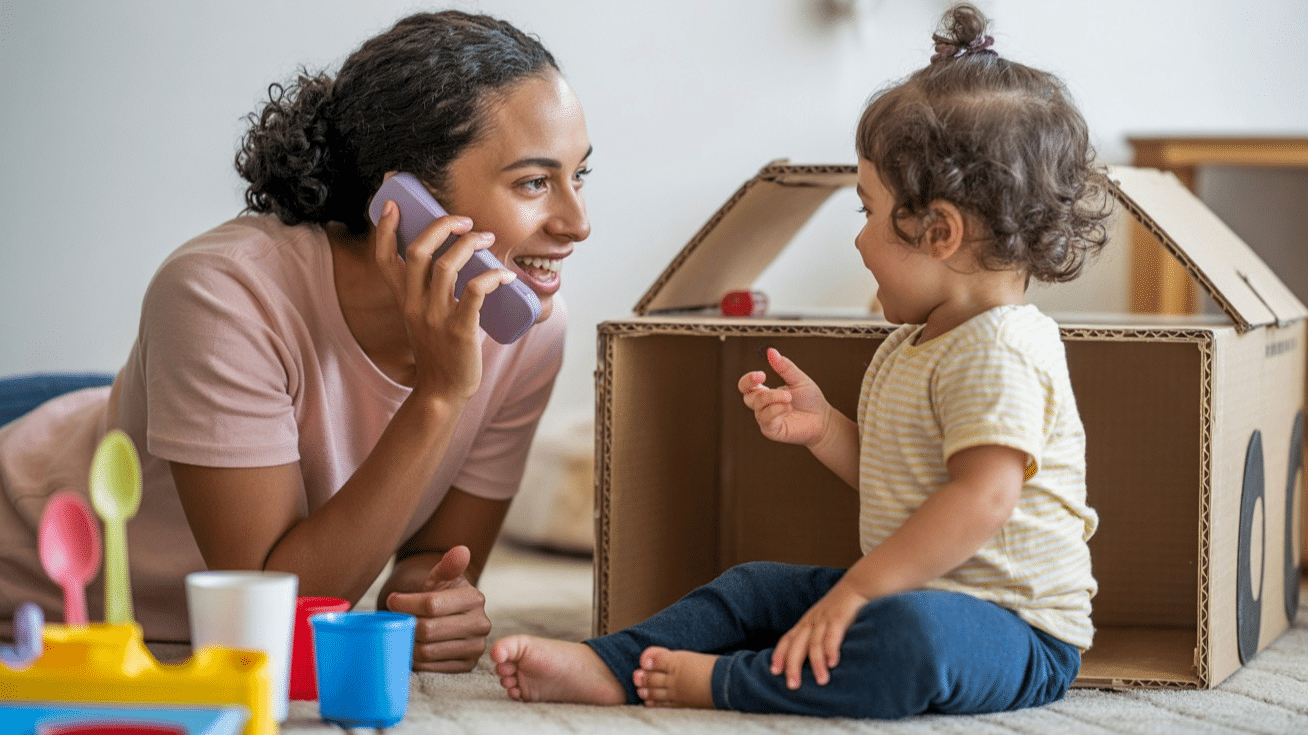
Now that you understand exactly when does pretend play start, you can actively support your child’s development through simple strategies. The best way to encourage pretend play is to follow your child’s lead. When they pick up a toy phone, pretend to answer your phone and have a conversation with them.
This shows them that pretend play is fun and valued.
Provide simple props that ignite imagination. Empty boxes become cars or houses. Kitchen utensils turn into musical instruments. You don’t need expensive toys – everyday items work just as well.
Join in their play without taking over. If your child is feeding their doll, ask if the doll is hungry or what they’re eating. This extends their play and shows you’re interested. Create a safe space for messy play. Let them pretend to cook with play-dough or set up a pretend restaurant with real plates.
The more freedom they have, the more creative they become. Remember, your enthusiasm matters most. When you show excitement about their pretend play, children feel encouraged to keep exploring their imagination.
Dr. William Sears, a prominent American pediatrician, suggests offering simple props like toy phones, dolls, or kitchen items to stimulate creative play. He notes that two-year-olds love imitating parents, which can spark elaborate pretend scenarios
Common Concerns About Pretend Play
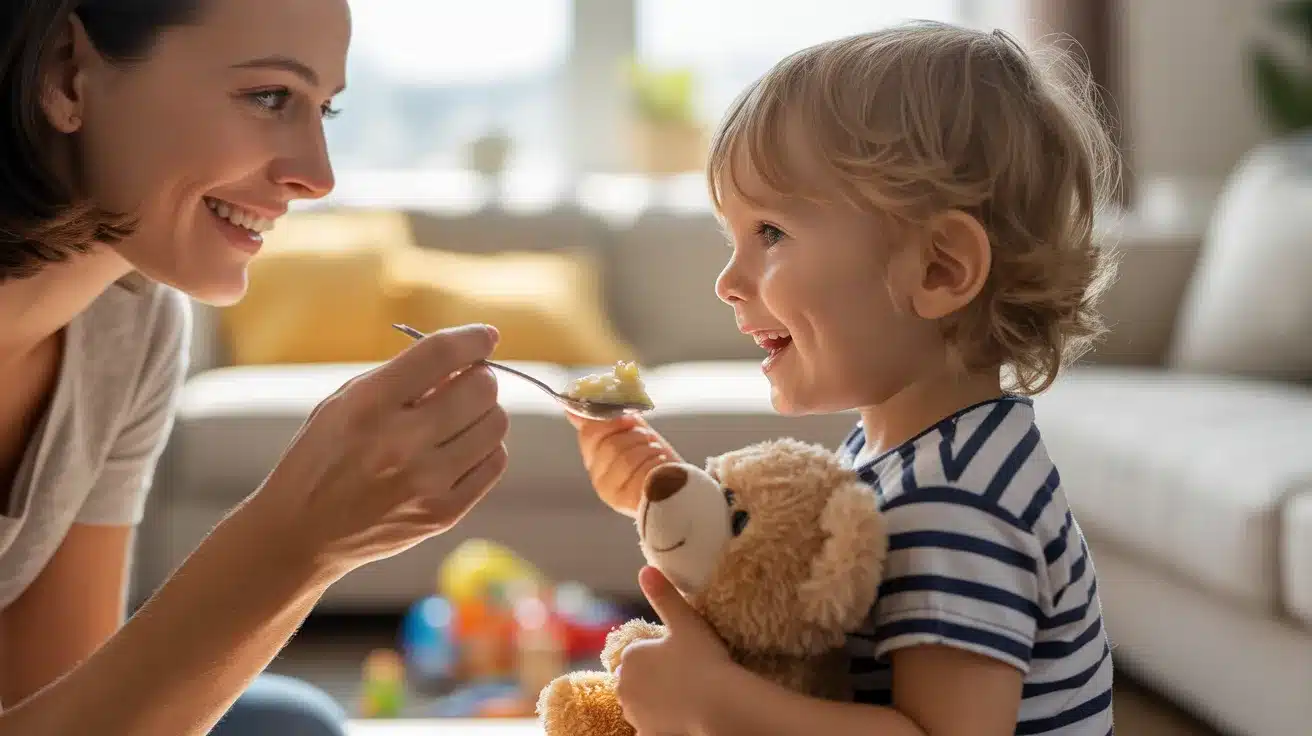
Many parents worry about when does pretend play start and how it affects their child’s development in the long run. These concerns are typical, and most have simple solutions that can help your child grow.
1. “My child doesn’t seem interested in pretend play.” Some children are naturally more interested in other activities, like building or puzzles. Try starting with their interests – if they love cars, pretend to be a mechanic fixing them.
2. “My child only copies what they see, never creates original play.” Copying is how children learn. Give them time and space to develop their ideas. Avoid directing their play too much.
3. “My child’s pretend play seems too violent or aggressive.” This is normal as children work through emotions. Set gentle limits and redirect violent play toward problem-solving scenarios.
4. “My child talks to imaginary friends constantly.” Imaginary friends are healthy and show good social development. Only worry if your child can’t distinguish between real and pretend people.
5. “My child’s pretend play hasn’t progressed in months.” Development happens in spurts. If you’re concerned, talk to your pediatrician about your child’s overall growth.
Summing It Up
Understanding when does pretend play start helps you support your child’s growth at every stage. From those first simple gestures at 6 months to complex storytelling at 5 years, each step builds essential skills.
Remember, every child develops at their own pace. Some might start pretending earlier, while others do so later.
What matters is that they’re progressing and having fun. Your role is simple: provide props, join their play, and show enthusiasm. When you value their imagination, children feel confident in continuing to probe.
So what’s next? Start observing your child’s current play stage and try one new, encouraging activity this week. Their imagination is waiting to grow!


